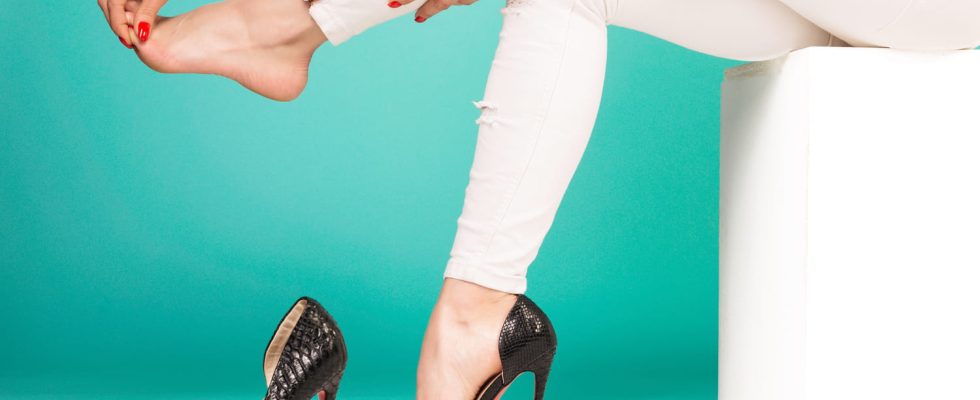Enthesopathy is manifested by pain at the insertion of the tendons. This disease can affect the knee, hip, elbow, shoulder, foot or even the Achilles heel. What are the symptoms ? And the causes?
Enthesopathy is a disease that can affect the hip, the knee or the foot (calcean). This pathology is sometimes caused by a tendinitis of the tendon achilles or chronic inflammatory disease. Whether mechanical or inflammatory, enthesopathy causes localized pain. What are the causes ? How the diagnose ? What are the treatments to treat enthesopathy?
Definition: what is enthesopathy?
“enthesopathy is a pathology that affects the entheses, areas of insertion of the tendons in the bone“explains Dr. Christelle Darrieutort-Laffite, rheumatologist from the outset. An enthesis is the area where the tendon, the ligament and the capsules are inserted into the bone. “Overall, the enthesopathies are differentiated mechanical and inflammatory enthesopathies“, she specifies.
What is calcaneal enthesopathy?
“These are more the legs who are prone to enthesopathies, especially the foot and hippossibly also the knee“, indicates Dr. Christelle Darrieutort-Laffite. There is in particular a frequent enthesopathy at the level of the heel : calcaneal enthesopathy that touches the heel bone or the plantar aponeurosis (sole of the foot). This calcaneal enthesopathy can be calcifying when it is chronic.
What are the causes of enthesopathy?
“Enthesopathy may be due to overuse, excessive reaction-traction of the tendon insertion zone“, informs the rheumatologist. This is called mechanical enthesopathy. It occurs in a sports setting or in a professional setting during repetitive movements. In this case, they can be associated with damage to the body of the tendon (for example, with a achilles tendonitis). Enthesopathy can also occur as part of the development of a chronic inflammatory disease, in particular the spondylitis or psoriatic arthritis. It is then a enthesitis.
What are the symptoms of enthesopathy?
Symptoms differ depending on whether the enthesopathy is mechanical or inflammatory. “When the enthesopathy is of mechanical origin, these are pain on exertion, during movements that solicit the tendon. If it has an inflammatory cause, it leads to pain rather at restor in the morning when you wake up“, informs Dr. Christelle Darrieutort-Laffite.
It is not always easy to distinguish between mechanical and inflammatory enthesopathy. Iclinical interview and examination care is needed. “The location and rhythm of pain are diagnostic criteria” explains the rheumatologist. There x-ray may show indirect signs of enthesopathy: enthesophytes, bony growths, consequences of the pathology of the entheses. “A ultrasound or MRI to see the tendons and their insertion are done only when the treatment does not work and a diagnosis has been established clinically“adds the specialist.
“Treatment depends on the location of the enthesopathy“, says the rheumatologist.
► When the foot is affected, the treatment goes through an adaptation of the footwear or the wearing of insoles (if there is pain in the Achilles heel, we put a slightly raised heel). “This allows you to have less stress on the area that hurts“, explains Dr. Christelle Darrieutort. If the knee is affected, it is necessary a rest, by doing less sport for example. In case of chronic inflammatory rheumatism, the treatment also consists in the management of this pathology.
► painkillers or anti-inflammatory drugs can be associated.
► “Of the physiotherapy and injections can be performed if necessary, but infiltrations are done for certain locations only“, adds the rheumatologist. “Some physiotherapists offer ultrasound for pain relief but these techniques have never been well evaluated scientifically“, she indicates.
Thanks to Dr Christelle Darrieutort-Laffite, rheumatologist at Nantes University Hospital.
